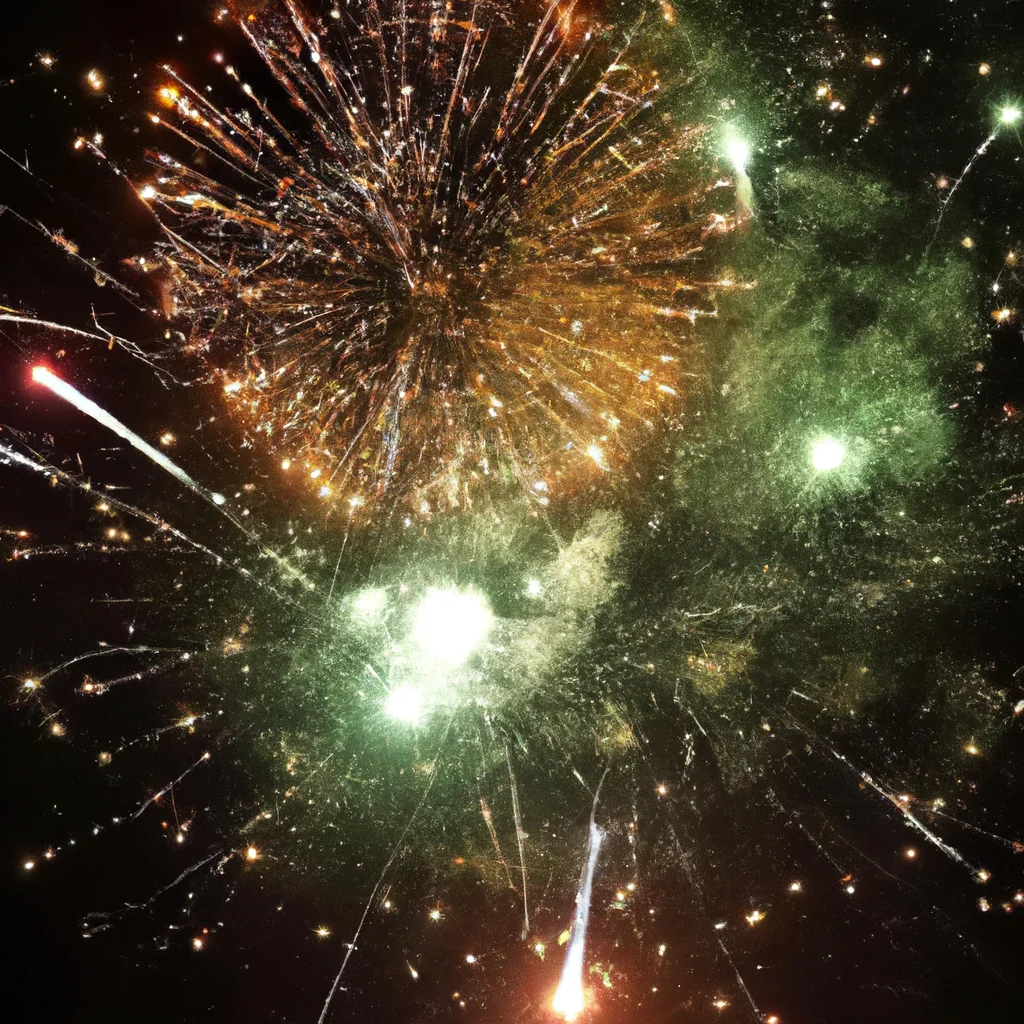How are fireworks made?


How are fireworks made?
Fireworks are a popular way to celebrate special events, such as Independence Day, New Year’s Eve, or weddings. They are a type of pyrotechnic device that produces colorful explosions, light, and sound. But how are fireworks made? In this article, we will explore the science, history, and safety aspects of firework manufacturing, design, and chemistry.
Firework Ingredients
Fireworks consist of four main components: an oxidizer, a fuel, a binder, and color-producing chemicals. The oxidizer provides oxygen to the fuel, allowing it to burn rapidly and produce heat and gas. The most common oxidizers used in fireworks are potassium nitrate (KNO3), sodium nitrate (NaNO3), and ammonium perchlorate (NH4ClO4). The fuel can be charcoal, sulfur, or aluminum powder, which burns and generates light and heat when mixed with the oxidizer. The binder keeps the mixture together and can be made of dextrin, gum arabic, or starch. Finally, the color-producing chemicals are added to create the desired hues, such as strontium (red), barium (green), copper (blue), or sodium (yellow).
Firework Science
The chemical reactions that occur inside a firework are complex and depend on the type and amount of ingredients, as well as the design of the device. When a firework is ignited, a fuse ignites a small charge that propels the firework into the air. As the firework rises, it ignites a larger charge that produces a burst of light and sound. The burst is created by a shell or a tube that contains the firework mixture and a small amount of gunpowder. The gunpowder ignites the mixture, causing it to explode and release a shower of sparks and colors.
Firework Design
Fireworks come in various shapes and sizes, from small sparklers to large aerial shells. The design of a firework depends on its intended use and audience. For example, a firework display for a sports event may feature shapes of balls or logos, while a wedding celebration may have heart-shaped fireworks. Aerial shells can be designed to produce different patterns, such as stars, comets, or chrysanthemums. The size and weight of a firework also affect its performance and safety. Larger shells require more propellant and launch tubes and may have longer fuses, while smaller fireworks can be handheld and have shorter fuses.
Firework Manufacturing
Firework manufacturing is a highly regulated industry that involves many safety precautions and standards. Firework factories must adhere to local and national regulations, such as the Occupational Safety and Health Administration (OSHA) guidelines, to ensure the safety of workers and consumers. Workers in firework factories must wear protective gear, such as goggles, gloves, and masks, and follow strict protocols for handling and mixing chemicals. Firework factories also have fire-suppression systems, such as sprinklers, alarms, and fire extinguishers, to prevent accidents and fires.
Firework History
Fireworks have a long and rich history that dates back to ancient China, where they were used for religious and cultural purposes. The Chinese invented gunpowder in the 9th century and later used it to create rockets, firecrackers, and other pyrotechnic devices. Fireworks spread to Europe in the 14th century and became popular for royal weddings, coronations, and military victories. In the United States, fireworks were used to celebrate Independence Day since the country’s founding and became a symbol of patriotism and freedom.
Firework Safety
While fireworks can be fun and exciting, they also pose risks if not handled properly. Every year, thousands of people are injured by fireworks, and some even die from burns, explosions, or fires. To minimize the risks of fireworks, it is essential to follow safety guidelines, such as:
– Only use legal fireworks that are approved by the Consumer Product Safety Commission (CPSC)
– Read and follow the instructions on the fireworks label
– Keep a safe distance from the fireworks and never aim them at people, animals, or buildings
– Have a bucket of water, a hose, or a fire extinguisher nearby in case of emergency
– Never attempt to relight a malfunctioning firework
– Dispose of used fireworks in a metal container after they have cooled down.
In conclusion, fireworks are a fascinating and complex subject that involves science, history, design, and safety. Knowing how fireworks are made and used can help us appreciate their beauty and enjoy them safely. Whether you are watching a firework display or setting off your own, remember to follow the rules and be responsible. Happy Fourth of July!
Recent Posts
How do I create an engaging and informative online quiz or assessment?
Creating an engaging and informative online quiz or assessment can be a powerful tool for… Read More
What are the most effective methods for managing and reducing work-related stress in the hospitality industry?
Work-related stress is a common issue in the hospitality industry, where employees often face long… Read More
How can I improve my assertiveness and communication skills in a leadership position?
In a leadership position, assertiveness and effective communication skills are crucial for success. Being able… Read More
What are the key elements of a successful employee recognition and rewards program?
Employee recognition and rewards programs play a crucial role in motivating and engaging employees, as… Read More
How do I effectively manage and respond to customer feedback and reviews?
Customer feedback and online reviews play a crucial role in shaping a company's reputation and… Read More
What are the best strategies for effective time management as a stay-at-home parent?
Effective time management is crucial for stay-at-home parents who juggle multiple responsibilities on a daily… Read More